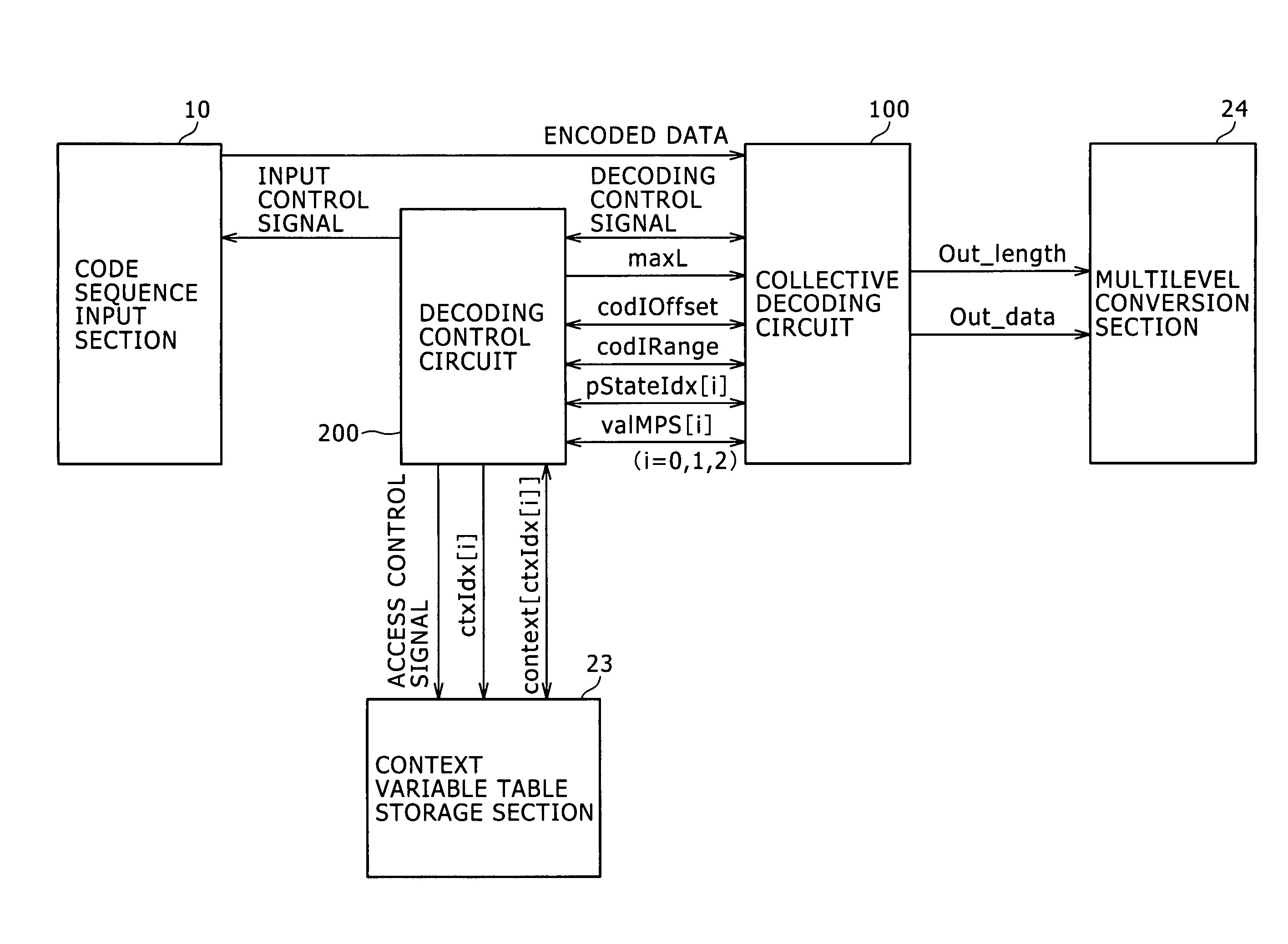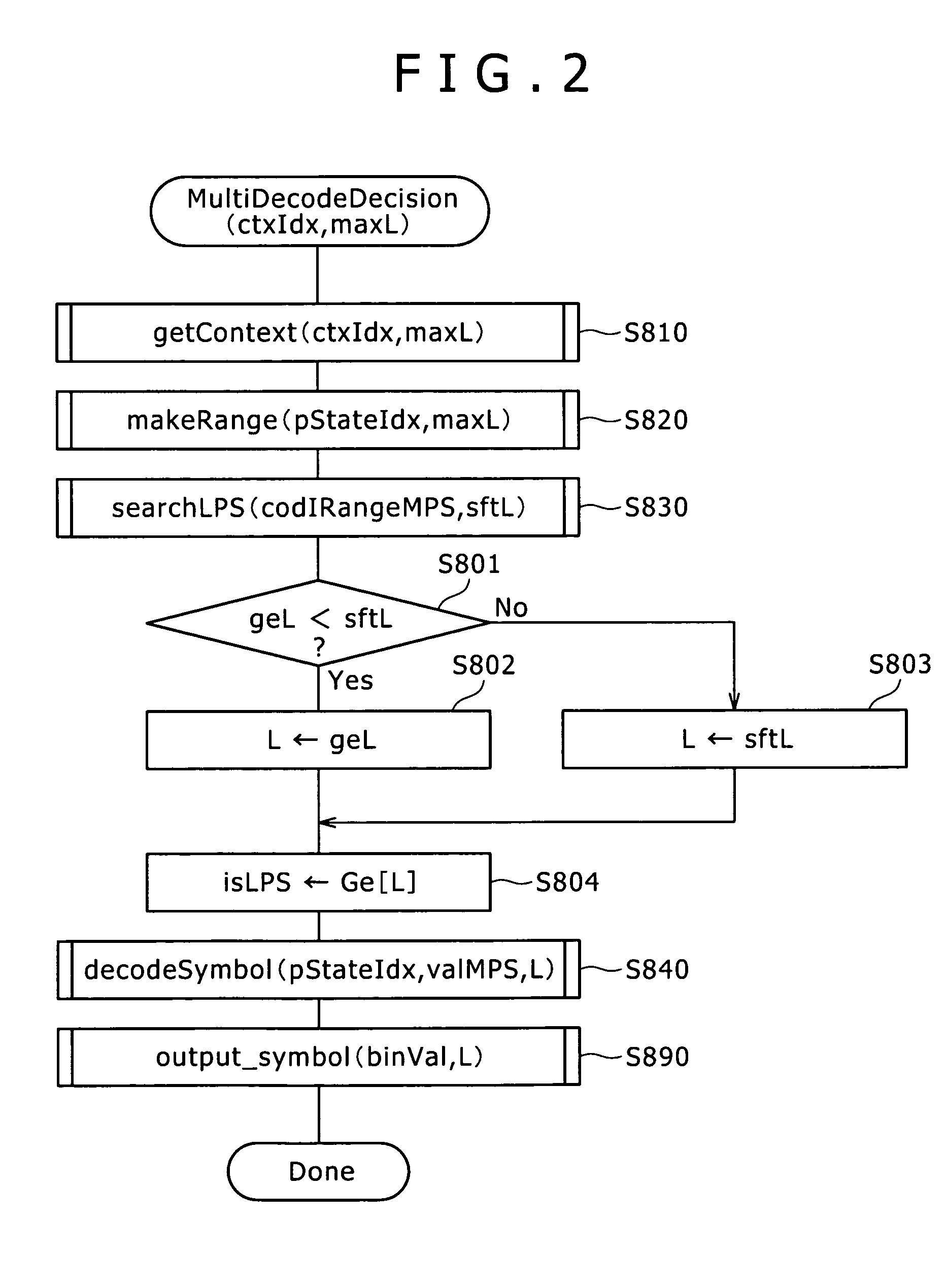Arithmetic decoding apparatus
a decoding apparatus and arithmetic technology, applied in the field of arithmetic decoding systems, can solve the problems of difficult to predict the number of times the decoding process needs to be repeated, difficult to implement a circuit that can be driven at a high operating frequency to decode one or more symbols, and difficult to improve efficiency, so as to improve the performance of a context-adaptive binary arithmetic decoding process, reduce the scale of circuitry, and improve the performance of a
- Summary
- Abstract
- Description
- Claims
- Application Information
AI Technical Summary
Benefits of technology
Problems solved by technology
Method used
Image
Examples
Embodiment Construction
[0062]Next, a preferred embodiment of the present invention will be described in detail below, with reference to the accompanying drawings.
[0063]FIG. 1 illustrates an exemplary structure of a CABAC decoder 20 according to an embodiment of the present invention. The CABAC decoder 20 receives encoded data from a code sequence input section 10, decodes the encoded data to obtain a corresponding binary signal, and thereafter converts the binary signal into multilevel form to obtain a corresponding multilevel signal. The CABAC decoder 20 includes a binary arithmetic code decoding section 21, a context index calculation section 22, a context variable table storage section 23, and a multilevel conversion section 24.
[0064]The context index calculation section 22 calculates a context index (ctxIdx), and supplies the calculated context index ctxIdx to the binary arithmetic code decoding section 21.
[0065]The context variable table storage section 23 stores a context variable table, which conta...
PUM
 Login to View More
Login to View More Abstract
Description
Claims
Application Information
 Login to View More
Login to View More - R&D
- Intellectual Property
- Life Sciences
- Materials
- Tech Scout
- Unparalleled Data Quality
- Higher Quality Content
- 60% Fewer Hallucinations
Browse by: Latest US Patents, China's latest patents, Technical Efficacy Thesaurus, Application Domain, Technology Topic, Popular Technical Reports.
© 2025 PatSnap. All rights reserved.Legal|Privacy policy|Modern Slavery Act Transparency Statement|Sitemap|About US| Contact US: help@patsnap.com



